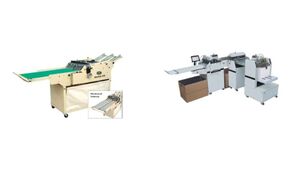-
 Find in Members
Find in Members Find in Videos
Find in Videos Find in Channels
Find in Channels
This website uses cookies to ensure you get the best experience on our website.
To learn more about our privacy policy Click herePrivacy Preference
-
- Last updated Jul 3 0 comments, 29 views, 0 likes
More in Politics
Related Blogs
Archives
Die Cutters: Revolutionizing Precision Cutting Across Industries
Body
Die cutting is a fundamental process in manufacturing and design, revolutionizing the way materials are shaped and customized for various applications. From intricate paper designs to precise automotive components, die cutters play a pivotal role in achieving accuracy and efficiency in production. This comprehensive article explores the technology behind die cutters, their diverse applications across different sectors, and the factors to consider when choosing the right die cutter for specific needs.
Understanding Die Cutting Technology
Die cutting involves using a die—a sharp-edged tool typically made of metal—to cut out specific shapes from materials such as paper, cardboard, fabric, rubber, and even metals. The die is pressed onto the material under high pressure, resulting in clean and precise cuts. The process can be performed manually with handheld or tabletop machines, or automatically with digital or rotary die cutters.
Types of Die Cutting Machines
-
Manual Die Cutters: These machines are operated by hand and are often used for small-scale projects like crafting, scrapbooking, and hobbyist activities. They are cost-effective and simple to use, making them popular among individuals and small businesses.
-
Digital Die Cutters: Also known as electronic die cutters, these machines are computer-controlled and can execute complex designs with exceptional precision. They are versatile and find extensive use in industries such as packaging, printing, and graphic design where high accuracy and repeatability are essential.
-
Rotary Die Cutters: Designed for high-volume production, rotary die cutters use a cylindrical die to continuously cut materials into shapes. They are efficient for cutting materials like textiles, plastics, and thin metals, making them indispensable in industries such as automotive manufacturing and industrial packaging.
Applications of Die Cutters
Die cutters are integral to various industries and creative fields due to their versatility and precision:
-
Packaging: Die cutters are used to create custom boxes, inserts, and packaging materials. They enable manufacturers to design intricate packaging solutions that enhance product presentation and protection.
-
Printing and Graphic Design: In the printing industry, die cutters are employed to produce unique shapes for cards, invitations, labels, and promotional materials. They enable designers to create visually striking products that stand out in competitive markets.
-
Textiles: Die cutters are utilized in the textile industry for cutting fabric patterns for apparel, upholstery, footwear, and accessories. They ensure consistency and accuracy in cutting intricate designs, improving production efficiency and product quality.
-
Automotive: In automotive manufacturing, die cutters are used to produce gaskets, seals, interior components, and insulation materials. They play a crucial role in achieving precise fits and finishes, contributing to the overall quality and performance of vehicles.
-
Medical: Die cutters are essential in the medical industry for cutting materials used in medical devices, surgical instruments, wound care products, and packaging. They adhere to strict quality standards and ensure sterile and precise cutting of medical materials.
Factors to Consider When Choosing a Die Cutter
When selecting a die cutter, several factors should be taken into consideration to ensure it meets specific requirements:
-
Material Compatibility: Different die cutters are designed to handle specific materials. Consider the type and thickness of materials you intend to cut, such as paper, cardboard, fabric, or metals, and choose a die cutter that can accommodate those materials effectively.
-
Precision and Accuracy: Evaluate the level of precision required for your applications. Digital die cutters offer high precision and are suitable for intricate designs and detailed cutting tasks, while manual die cutters may suffice for less complex projects.
-
Production Volume: Determine the volume of cutting tasks you anticipate. For small-scale or occasional use, a manual die cutter may be sufficient. In contrast, high-volume production environments benefit from the efficiency and speed of digital or rotary die cutters.
-
Cost and Budget: Consider your budget constraints and the initial investment required for purchasing a die cutter. Compare the costs of different types of die cutters, including maintenance and operational expenses, to find a solution that aligns with your financial resources.
-
Additional Features: Explore additional features and capabilities offered by die cutters, such as adjustable cutting pressure, compatibility with design software, and ease of operation. These features can enhance productivity and streamline workflow processes.
Conclusion
Die cutters have transformed manufacturing and design processes across industries by enabling precise, efficient, and customizable cutting of materials. Whether creating intricate paper designs, manufacturing automotive components, or producing medical devices, die cutters play a vital role in achieving consistent quality and enhancing product innovation. By understanding the technology behind die cutters, exploring their diverse applications, and considering key factors when choosing a die cutter, businesses and individuals can make informed decisions to meet their specific cutting needs effectively.







Comments